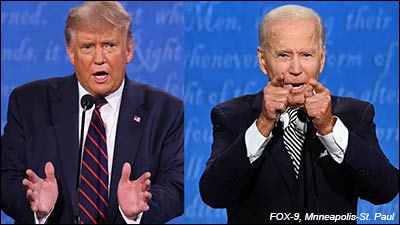By Jim Ellis — Friday, May 3, 2024
President
Robert F. Kennedy Jr.: Qualifies in CA — Independent presidential candidate Robert F. Kennedy Jr. has qualified for the 2024 general election ballot in California as the nominee of the American Independent Party. In addition to the Golden State, he has an official ballot position in Michigan and Utah. He has filed the requisite number of signatures in Hawaii, Idaho, Iowa, Nebraska, Nevada, New Hampshire, and North Carolina, and awaits certification in each of those states.While Kennedy may affect the outcome in some of the aforementioned swing states, solidly blue California will not be in play. President Joe Biden will easily carry the nation’s largest state regardless of RFK Jr.’s ballot presence.
House
CA-16: The Tie is Broken — As expected, recounting all ballots in California’s 16th District jungle primary election did break the tied vote for the second qualifying general election ballot position. Both state Assemblyman Evan Low (D-Campbell) and San Mateo County Supervisor Joe Simitian each finished the initial count with 30,249 votes. Allies of the first-place finisher, former San Jose Mayor Sam Liccardo (D), then paid for a recount. Neither Low nor Simitian moved for a recount because California election procedure allows all tied candidates to advance into the general election. Otherwise, it is only the two top vote-getters who compete in November.
With the recount now final, Assemblyman Low finished with an adjusted five-vote margin, meaning he will solely advance to the general election to face former Mayor Liccardo. It will now be interesting to see if Simitian now requests and finances a second recount. With such small vote margins, another recount could produce a different result.
NY-26: Democrat Disqualified — A day after state Sen. Tim Kennedy (D-Buffalo) easily won the special election to succeed resigned Rep. Brian Higgins (D) in New York’s 26th Congressional District, his regular election Democratic challenger, former two-time congressional candidate Nate McMurray, has been disqualified. Election officials ruled he did not file enough valid petition signatures to be awarded a ballot position. Therefore, it appears Rep-Elect Kennedy will now be unopposed for re-nomination. Winning the Democratic primary in this Buffalo-anchored district is tantamount to claiming the November election. The FiveThirtyEight data organization rates NY-26 as D+18.
McMurray lashed out at the party leaders after his rejection was made public claiming in a long letter on X that, “it feels like even if we collected 100,000 signatures it would not have made a difference. They would have found something to throw me off. I’m a threat to their closed shop business. And don’t kid yourself; it’s a business.”
OR-5: New Dem Leader — In 2022, one of the bigger upsets on election night was Republican Lori Chavez-DeRemer defeating Democrat Jamie McLeod-Skinner to convert Oregon’s 5th District to the GOP. Earlier that year, in May, McLeod-Skinner upset seven-term Rep. Kurt Schrader in the Democratic primary.
A new brilliant corners Research & Strategies poll (April 26-28; 402 likely OR-5 general election voters; live interview) finds McLeod-Skinner now trailing state Rep. Janelle Bynum (D-Clackamas) by a 37-34 percent count. Due to McLeod-Skinner losing the seat in the previous election and generally rated as a weaker candidate, most of the Democratic leadership and establishment are backing Rep. Bynum. Therefore, this polling result is not particularly surprising.
Whoever wins the Democratic primary will find themselves already in a toss-up general election battle against Rep. Chavez-DeRemer. The FiveThirtyEight data organization rates OR-5 as D+3. President Biden carried the district in 2020 with a 53-44 percent margin. The Daily Kos Election site statisticians rank the seat as the ninth most vulnerable seat in the Republican Conference.






